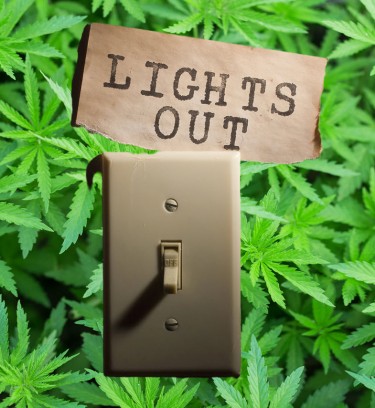Cannabis News
Grading the Presidential Candidates on Cannabis: RFK Jr.
Published
4 months agoon
By
admin
Every election cycle, we grade the many of the presidential candidates based on their track record with cannabis (here’s our summary of 2020’s main candidates). We kicked off 2024 with our analysis of incumbent President Joe Biden (Grade C), and followed up with Republican challenger Ron DeSantis (Grade C+), who recently dropped out of the race and endorsed Donald Trump. Most recently, we covered Nikki Haley (Grade B-), another longshot challenger who is still around.
Today, I want to do something a little unusual and look at an independent candidate, Robert F. Kennedy, Jr. RFK Jr. initially got in the race as a primary challenger to President Biden, but dropped out of the Democratic race in October to run as an independent.
Overall Grade: A-
RFK Jr. was a long-shot candidate from the start, as evidenced by his leaving the Democratic race in favor of an independent race. But when it comes to cannabis, is more willing to entertain massive overhauls to federal cannabis laws than Biden or Trump (almost guaranteed to be the Republican nominee). For that reason, I’m giving RFK. Jr. an A- on the cannabis scale. Here’s why:
RFK Jr.’s views on drug policy reform are reportedly shaped on his own prior struggles with addiction. Early in his presidential campaign, when he was still in the Democratic race, RFK Jr. said he would legalize cannabis and even psychedelics–a view he has repeatedly affirmed. More recently, as an independent candidate, he released ads noting that he wanted to decriminalize cannabis to focus on addiction treatment.
So what would an RFK Jr. cannabis plan look like in action? We know that he proposes to (a) legalize cannabis and allow for state regulation, (b) impose federal taxes on it, (c) ensure that cannabis businesses have banking access, (d) use cannabis taxes to fund addiction treatment, and (e) according to his website, “grant amnesty to nonviolent drug offenders.” We don’t have too many specifics on what this would look like in action, but it’s leagues ahead of President Biden or former President Trump, both of whom I’ll come back to below.
Why RFK Jr. only gets an A-
I chose to give RFK Jr. an A- instead of a higher grade for two reasons. First, at this stage his plan lacks implementation detail. For example, we don’t know what kind of tax rate he’d impose at a federal level, and a high one would obviously be a burden on the industry. So I thought it best to reserve judgment until we know more.
Second, I am always very skeptical of legalization efforts that start out with the premise that a cannabis tax will solve or even put a dent in some pressing social problem. Look no further than my home state of California. I agree with RFK Jr. that the states should be free to regulate cannabis, but imposing a federal tax will just add to operators’ already heavy plates unless states or municipalities are simultaneously precluded from cannabis taxation. And that’s not going to happen.
So, with these things in mind, I gave RFK Jr. an A-. It’s still far ahead of the competition.
How does RFK Jr. compare to the main party contenders
The 2024 elections are unusual in the sense that the two main party challengers both have had stints in the Oval Office. (Yes I know Nikki Haley is still in the race for now, but let’s be real). Former President Donald Trump didn’t have a great track record on cannabis while in office. His biggest accomplishment, in my opinion, was removing hemp from the Controlled Substances Act. We’ll be coming out with a post in this series on Trump soon. Without revealing too much, he won’t get even close to RFK Jr. on cannabis law issues.
President Biden has been better, but nowhere near as transformative as many had hoped. In the 2020 election cycle, we gave him a D based in large part on his congressional track record. This time, we gave him a C. The reason for the improvement is that he’s granted a series of pardons for smaller federal cannabis offenses, and because he kicked off the administrative review that could lead to cannabis being rescheduled. That said, Biden has had the opportunity to work with Congress to pass some kind of cannabis reform bill that would have more teeth, but just hasn’t.
RFK Jr. definitely has plenty of unconventional and controversial views and positions. But when it comes to advancing a reasonable change in federal drug policy, he’s undoubtedly leagues ahead of both Biden and Trump. While another Kennedy presidency is unlikely in this election season, maybe one of the big ticket candidates will follow suit.
You may like
-


Can You Give Your Dog Magic Mushrooms?
-
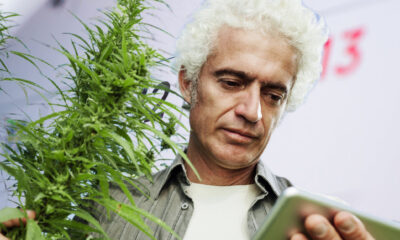

Forget Croptober – How to Grow Cannabis So You Can Crop Plants 12 Months a Year
-


The Government Wants to Kill the US Weed Industry
-


Hemp Today Report: Region in southern Uruguay forging a model supply chain for hemp food products
-


4 Ways Marijuana Can Help In A Messy Break Up
-


Medical Marijuana Is About To Have A Big Positive Change


Can Dogs Also Benefit From Mushrooms?
While the decriminalization of cannabis has been liberating for us humans as a whole, it also has another major benefit for us: extending the lifespan of our furry companions.
Cannabidiol (CBD) and hemp products have been proven to offer a wide range of health benefits for our pet cats and dogs, most especially when it comes to the treatment of pain, anxiety, cancer, and other symptoms that cause them a great deal of discomfort. Any pet parent can tell you how frustrating it can be to see your furry companions in pain, and not being able to help them. Many animal CBD medications are also more affordable and effective than conventional veterinary medications.
That said, can we expect the same with the psychedelic revolution?
Part of Nature?
In a Pharmaceutical Journal article written by Andrew Haynes back in 2010, he talks about animals purposely seeking out psychedelics in their natural habitat. According to Haynes, just like humans, animals look for these psychedelic substances in nature to cure boredom.
And, there are many other examples of this in the natural world. In Siberia, reindeers look out for the famous red and white amanita muscaria mushrooms, which are well-known for their hallucinogenic properties. Amanita muscaria is also significant in Siberian religion. These reindeer are interested in muscimol, a compound found in these mushrooms, which gives them a relaxing and hallucinogenic effect.
Cats – whether our lovable domesticated housecats or the feisty felines of the jungle – are all known to enjoy catnip. Catnip is actually a psychedelic plant for cats, and it’s abundant all over the world. It releases a chemical, nepetalactone, which makes cats deliriously delightful when ingested or inhaled. Some scientists even have a theory that catnip can cause hallucinations among cats.
In other words, it isn’t just humans who can actually enjoy the benefits of psychedelics.
So What About Magic Mushrooms For Dogs?
At the moment, research on the use of magic mushrooms for dogs (and cats) is still limited since these topics are still in its infancy. It’s only ketamine that’s commonly used by veterinarians these days, particularly for pain management and general anesthesia. Ketamine possesses psychedelic properties, which we know very well in humans though much less of its effect in animals. That said, we do know that giving animals ketamine does alter their consciousness and results in memory loss and pain relief for them.
However, using psychedelics could be promising for progressive veterinarians especially when it comes to treating severe anxiety, depression, pain, and even behavioral issues. But we need more published research to consider it as proven therapy, since we don’t even understand the dosing protocols required for safety and efficacy.
Some ancient cultures, who have long been using entheogens and plant medicine, have naturally mastered using these sacred, magical plants. The Quichua and Shuar peoples of Ecuador utilize hunting dogs, without which they wouldn’t be able to have any food for their survival. And since there are no veterinarians in tropical Ecuador, the hunters of Quichua arm their dogs with an array of plant medicines to improve the success of their hunt. These include Piper and Siparuna to minimize the risk of evils pirits, Ilex guayusa to give them more energy and alertness, and even hallucinogens to sharpen their hunting abilities.
The Quichua and Shuar peoples even give their dogs doses of Angel’s Trumpets, a beautiful yet insanely toxic flower to humans – notorious for effectively dislodging one from reality. Yet, for them, it improves the hunt of their dogs.
But it’s going to take much more research for us to have as much information on the use – and safety!- of psychedelics for dogs as it is with cannabis. That’s because dogs have a very unique physiology as well as biology, which we need to take into consideration before giving them any kind of psychedelic medicine.
There are certain things we must be wary about, so don’t go on giving your dogs magic mushrooms just yet:
For one, dogs are extremely prone to overheating. Consuming psychedelics can cause your dog to heat up and it can even cause heat stroke. Additionally, giving dogs the wrong kind of magic mushrooms can be fatal: without the right education and guidance, one trip for your dog could end up being their last. Even the most common mushrooms can have poisonous effects on dogs, so it’s critical to avoid feeding them mushrooms if you aren’t experienced with it.
Medicinal, non-psychoactive mushrooms can have great health benefits for dogs, though. These include Reishi, Turkey Tail, and Maitake, and Shiitake mushrooms. All of these mushrooms contain abundant anti-inflammatory and immunity-boosting properties for dogs, strengthening their immune system and helping treat a wide range of conditions. However even the use of medicinal mushrooms for dogs requires more research.
Conclusion
Magic mushrooms, and other kinds of psychedelic drugs, do hold a lot of potential for treating different ailments that dogs suffer from. They can also improve the overall quality of life for senior dogs, or dogs in pain. That said, we need so much more research.
Until then, there’s no way we can advocate for pet owners to start using psilocybin on their dogs and cats just yet. Clear data for each species is necessary, and we need stringent guidelines on dosing and efficacy. For now, it’s important to learn as much as we can.
CANNABIS FOR DOGS, READ ON…
Cannabis News
Forget Croptober – How to Grow Cannabis So You Can Crop Plants 12 Months a Year
Published
1 day agoon
June 1, 2024By
admin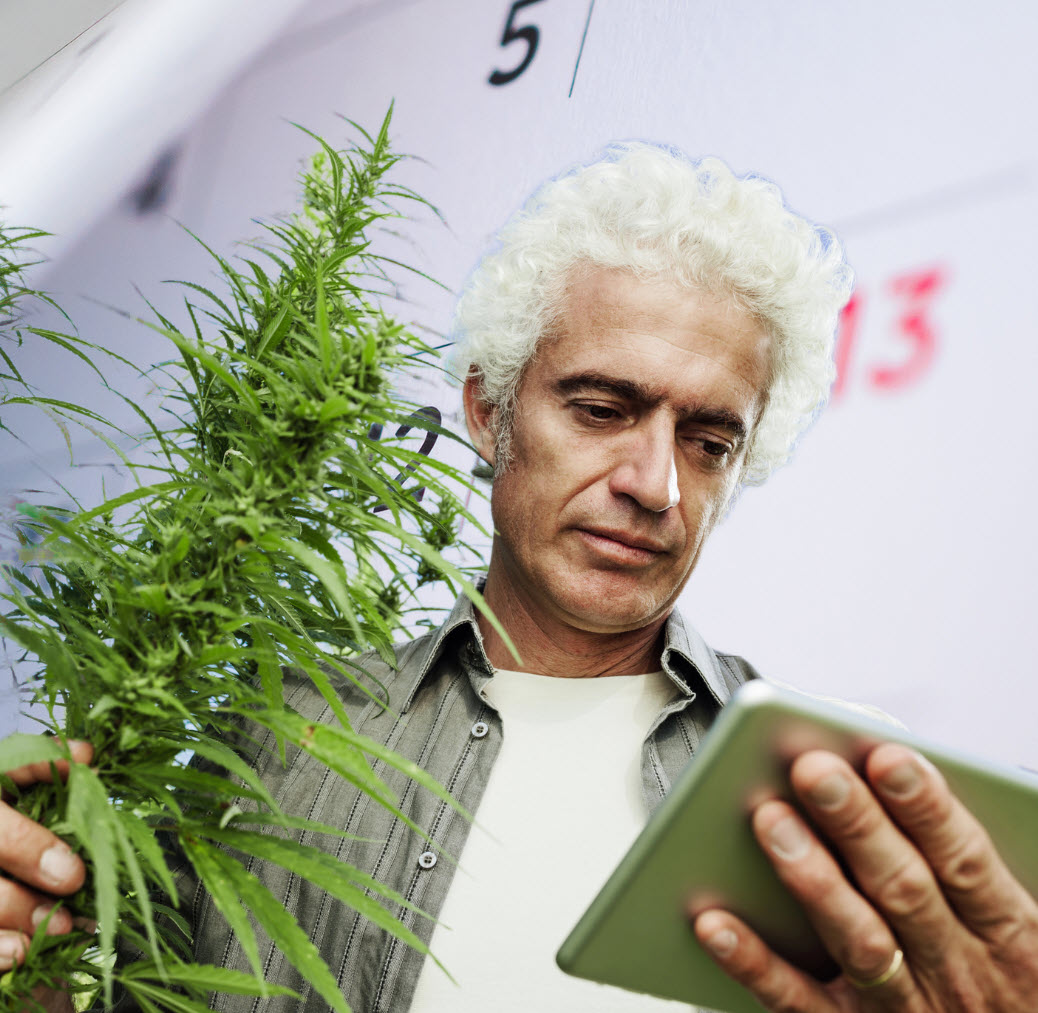
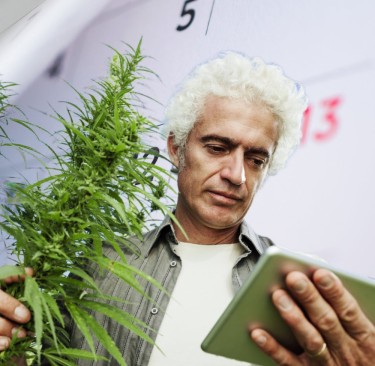
Why settle for one cannabis harvest a year when you can have multiple? Imagine having your own freshly harvested cannabis available whenever you want. Growers can achieve this by maintaining a year-round garden with a system called perpetual harvest. The concept involves harvesting small amounts of cannabis multiple times throughout the year, rather than one large batch annually. Depending on your setup, you could harvest every week, two weeks, a month, or at any interval you prefer.
To keep a steady supply, consider implementing a perpetual harvest system.
For personal growers, this ensures your stash is always stocked with fresh buds. For commercial growers, it means a consistent income and continuous employment for your team.
Perpetual harvests eliminate the waiting game, keeping you consistently busy without the stress of everything needing to be done all at once.
How to Harvest Cannabis Multiple Times Per Year
Attempting to grow cannabis plants as usual while aiming for multiple harvests will leave you tired and disappointed. You’ll need to work smarter and harder to achieve more than one crop per year, with your budget playing a significant role.
The key to multiple harvests lies in manipulating the flowering and vegetative processes and reorganizing (and possibly expanding) your growing space.
You’ll need ample room indoors or space for a greenhouse outdoors. Creating separate areas for seedlings, vegetative growth, and flowering is crucial. This separation ensures that the growing process for any set of plants isn’t hindered.
Ready to get started? Great! Let’s dive into how a perpetual cannabis harvest works.
Equipment and Supplies for a Perpetual Cannabis Harvest
To start your multi-harvest operation, you’ll need the following:
Extra Growing Area/Tent
You’ll need separate spaces for two groups of cannabis plants, each with different lighting schedules. This requires partitioning your growing area with a sturdy wall.
You can use one large grow tent or room, but you’ll need to install a wall and a door for access between the spaces. One area will be dedicated to the vegetative stage and the other to flowering plants. The vegetative area can be smaller since those plants need less space compared to the flowering room.
Weaker Lights
Since you’ll need a separate space with a different light schedule, you’ll need an additional set of lights. These don’t have to be as powerful because vegetative phase plants require less intense light than flowering plants.
Light-Proofing Supplies
To prevent light pollution from affecting flowering plants, ensure their space is thoroughly light-proofed. Use materials like garbage bags, thick boards, or other opaque materials to block out unwanted light.
Humidity, Temperature, and Air Circulation Supplies
With more plants in your space, you must carefully monitor humidity, temperature, and air circulation. Overcrowding can lead to issues like mold infestations. Adding an extra fan, vent, and thermometer/hygrometer will help maintain a safe environment for your cannabis.
Setting Up Your Grow Area
Once you have all your supplies, it’s time to set up your growing spaces.
Seedling / Vegetative Stage
Seedlings and veg-stage cannabis plants share the same light cycle requirements, so you can keep them in the same room. However, they should occupy different sections since they need different light intensities.
For seedlings, use small fluorescent T5 lamps placed directly overhead. These lamps should be on for 18 hours a day and off for 6 hours. This applies to clones as well, but clones also need heat pads underneath and humidity domes overhead.
Veg-stage plants need more powerful lights. While fluorescent T5s can work, metal halide (MH) or LED lights are preferable. Although MH and LED lights are more expensive and consume more electricity, they significantly boost yields, making them worth the investment.
Stage of Flowering
When your plants reach maturity, transfer them to a room with LED or high-pressure sodium (HPS) lighting. A 12-hour on/off cycle may be set on these lamps to replicate the seasonal variations in natural sunshine.
Furthermore, confirm that fans and vents are fitted to control temperature and humidity. An atmosphere that is conducive to healthy growth must have adequate ventilation.
Crop Rotation
The real art of a perpetual harvest lies in managing crop rotation effectively.
When your first set of plants enters the flowering stage, your work is far from over. You need to immediately prepare clones or newly germinated seeds to take their place in the vegetative space. This cycle depends on harvesting the first set of plants before the new plants are ready to begin flowering.
Timing is Everything
Before you start growing, choose seeds based on their flowering times. The vegetative phase of the second set of plants should last as long as the flowering phase of the first set. If the timing is off, the cycle will be disrupted.
Taking Clones and Planting Seeds
Timing is crucial when taking clones from your first set of plants. Generally, take clones from vegging plants about three weeks before harvest. For planting seeds, ensure they have enough time to germinate before moving into the vegetative space. This careful timing keeps your perpetual harvest running smoothly.
How Often Can You Harvest Cannabis Outdoors?
Now that you understand the process, you’re likely crunching the numbers to determine how many harvests you can achieve in a year. The frequency largely depends on your growing space size, the number of plants, and various other factors.
Generally, growers who successfully execute the process can achieve at least two very healthy harvests. A third harvest is also feasible, but it requires significant energy and space. In theory, with optimal conditions including space, time, and equipment, you could potentially achieve up to six harvests a year!
Bottom Line
Cannabis farmers may produce their preferred plants year-round with perpetual harvesting, guaranteeing a steady supply of fresh buds. Growers may maximize their harvests and enjoy several yields throughout the year by using smart crop rotation, appropriate timing, and sufficient environmental control methods. Perpetual harvesting is a helpful practice for both professionals and cannabis aficionados, since it guarantees a consistent supply of high-quality cannabis, whether it is for personal use or commercial production.
CROPPING CYCLES, READ ON…
Cannabis News
The Government Wants to Kill the US Weed Industry
Published
1 day agoon
June 1, 2024By
admin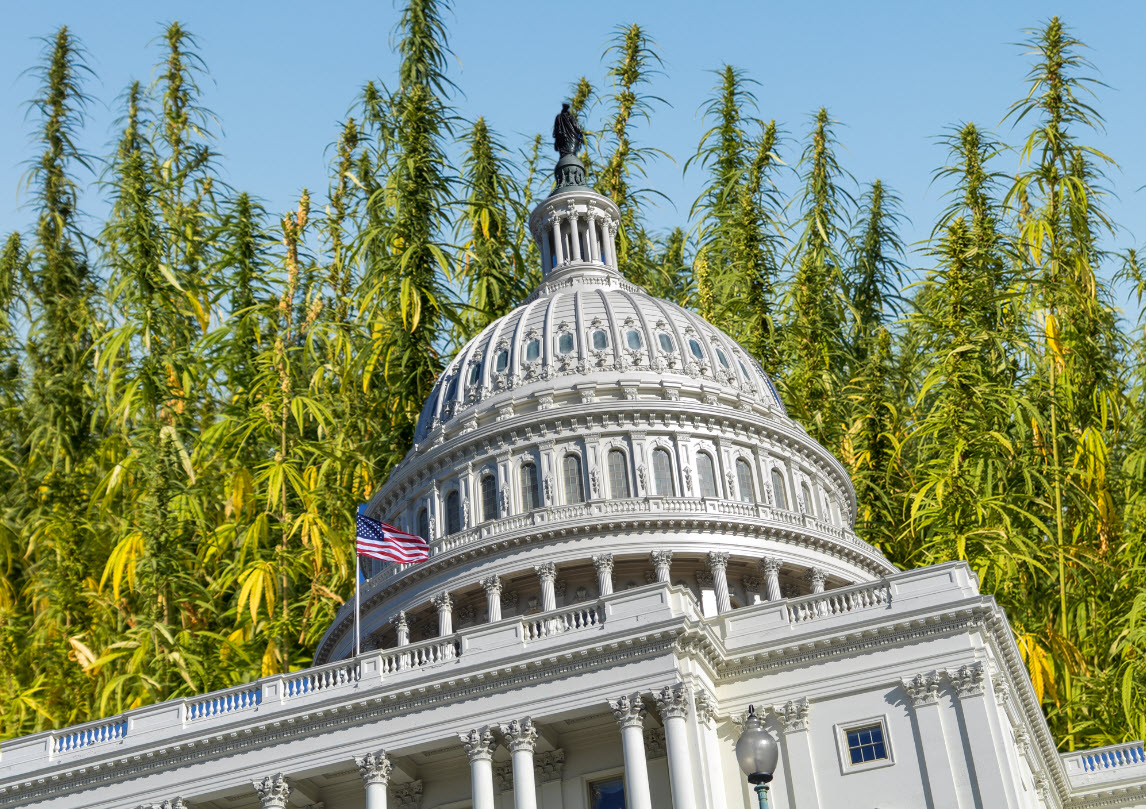
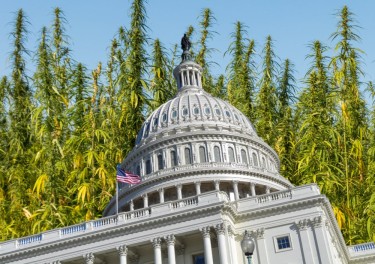
Why Does the U.S. Government Hate Freedom?
This is the question I find myself asking as I witness representatives in Congress raging about “closing the loophole” when it comes to legal hemp-derived psychoactive cannabinoids like Delta-8 THC, THCa, and others. It seems that our elected officials are more interested in restricting personal liberties than embracing the potential benefits of a thriving industry.
For the past six years, the United States has experienced a form of national cannabis legalization, though most people were unaware of it.
Thanks to the 2018 Farm Bill, hemp-derived psychoactive cannabinoids have allowed virtually every state to have some sort of legal cannabis products available in stores. This has been a game-changer for consumers and entrepreneurs alike.
However, now Congress aims to kill this $28 billion per year industry, rather than acknowledging that cannabis legalization, despite limited regulation, did not bring about the end of the world. In fact, it has created jobs, generated tax revenue, and provided countless individuals with access to alternative wellness options.
In this article, we will explore why the U.S. government seems to hate freedom and innovation, and why it’s crucial that you begin to vote out these dinosaurs who are holding us back.
The majority of Americans want legal access to cannabis, but the government remains woefully out of touch with the will of the people.
When most people think of the “unregulated cannabis market,” they often picture the illicit, black market trade. However, they would be mistaken. In reality, the hemp-derived cannabis marketplace has been the one operating largely unregulated for the past six years, much to the chagrin of the FDA and the U.S. government.
This unregulated market has flourished, growing into a staggering $28 billion per year industry. Hemp-derived psychoactive cannabinoids, such as Delta-8 THC and THCa, have become widely available, with products frequently found in head shops across the United States and even in neighboring countries like Mexico.
Essentially, this unregulated cannabis market has thrived without significant government intervention. Entrepreneurs have seized the opportunity created by the 2018 Farm Bill to innovate and meet consumer demand, all while operating in a legal gray area.
However, this booming industry is now seen as a threat by both legal cannabis companies operating within state-regulated systems and the government itself. Legal cannabis businesses argue that the unregulated hemp-derived market is cutting into their profit margins, as consumers opt for more readily available and often cheaper alternatives.
Meanwhile, government officials, likely influenced by lobbyists from the regulated cannabis industry, are seeking to put an end to this unregulated market. They claim concerns over safety and the lack of oversight, but it’s hard to ignore the financial motivations at play.
This brings us to the current situation, where a bill is floating through Congress that could severely restrict these hemp-derived cannabinoids and essentially wipe out an entire industry overnight. If passed, this legislation would redefine the legal status of these compounds, making them illegal under federal law.
The potential ramifications of this bill are immense. It would not only destroy a multibillion-dollar industry and eliminate countless jobs but also deprive consumers of access to products they have come to rely on. It’s a stark reminder of how quickly the government can intervene and disrupt entire markets, especially when powerful interests are at stake.
As we continue to examine this issue, it’s essential to consider the broader implications of the government’s actions. Is this really about public safety, or is it a blatant attempt to protect the profits of a select few at the expense of consumer choice and free-market innovation? The answer to that question may determine the future of the hemp-derived cannabinoid industry and the wider fight for cannabis legalization in the United States.
How to make hemp derived psychoactive THC
How to Make Psychoactive Hemp THC
To understand the current controversy surrounding hemp-derived psychoactive cannabinoids, it’s essential to grasp the differences between typical cannabis and hemp-derived THC products.
Traditional cannabis, often referred to as marijuana, contains a high concentration of delta-9-THC, the primary psychoactive compound responsible for the “high” associated with cannabis use. Hemp, on the other hand, is legally defined as cannabis plants containing less than 0.3% delta-9-THC by dry weight.
However, hemp plants still contain other cannabinoids, such as CBD, delta-8-THC, and THCa, which can be extracted and processed to create psychoactive products. The process of obtaining these compounds isn’t always naturally derived; it often requires additional steps and specific chemical processes.
For example, delta-8-THC is typically synthesized from CBD through a chemical reaction involving solvents and acids. This process alters the molecular structure of CBD, converting it into delta-8-THC, an isomer of delta-9-THC with similar psychoactive properties.
Despite the differences in production methods, the chemical structures of hemp-derived THC compounds are nearly identical to those found in traditional cannabis.
This means that the effects experienced by users are quite similar, although some cannabis enthusiasts argue that delta-8-THC produces a milder, more clear-headed high compared to delta-9-THC.
Nonetheless, the emergence of hemp-derived psychoactive products has provided a glimpse into what true cannabis legalization could look like. These products have been widely available, offering consumers a legal alternative to marijuana in states where recreational use remains prohibited.
The success of the hemp-derived THC market demonstrates that people are ready for a more open and accessible approach to cannabis. It has shown that legalization doesn’t necessarily lead to the doomsday scenarios often portrayed by opponents, such as increased crime rates or widespread addiction.
Instead, the unregulated hemp-derived THC industry has highlighted the potential benefits of a free and open cannabis market, including job creation, economic growth, and the availability of alternative wellness options for consumers.
As the government seeks to clamp down on this industry, it’s crucial to recognize that the genie is already out of the bottle. Consumers have experienced the benefits of legal access to psychoactive cannabinoids, and they are unlikely to accept a return to the days of strict prohibition.
Rather than attempting to suppress this market, policymakers should focus on creating sensible regulations that prioritize consumer safety, product quality, and responsible use. This approach would not only protect public health but also foster innovation and economic opportunity within the cannabis sector.
The rise of hemp-derived psychoactive cannabinoids has provided a tantalizing preview of what true cannabis legalization could achieve.
As the debate over the future of this industry continues, it’s essential to keep sight of the bigger picture: the need for a rational, evidence-based approach to cannabis policy that respects individual freedom and promotes the well-being of society as a whole.
The rise of the hemp-derived psychoactive cannabinoid industry has provided us with a unique opportunity to witness the effects of cannabis legalization in action. Over the past six years, this unregulated market has thrived, offering consumers access to legal, psychoactive cannabis products and demonstrating the potential benefits of a more open approach to cannabis policy.
Despite the lack of strict regulations, the sky hasn’t fallen. Society hasn’t crumbled under the weight of widespread cannabis use. Instead, we’ve seen the emergence of a vibrant, multibillion-dollar industry that has created jobs, generated tax revenue, and provided people with alternative options for relaxation and wellness.
This experience should serve as a wake-up call to policymakers and the public alike. It’s time to acknowledge that the current system of cannabis prohibition is broken and that a new approach is needed. The solution is clear: we must completely deschedule cannabis at the federal level and allow states to establish their own regulatory frameworks.
By removing cannabis from the list of controlled substances, we can finally begin to treat it like any other commodity. This will open the door to a new era of innovation, entrepreneurship, and economic growth, as businesses and investors flock to the cannabis sector.
Moreover, descheduling cannabis will enable us to embrace new market norms and adapt to the changing preferences of consumers. As the hemp-derived THC market has shown, Americans are ready and willing to incorporate cannabis into their daily lives, just as they do with alcohol or tobacco.
In fact, recent studies have indicated that Americans now consume cannabis on a daily basis more frequently than they drink alcohol. This shift in behavior reflects a growing acceptance of cannabis as a normal part of adult life, and it’s time for our laws and policies to catch up with this reality.
The bottom line is that cannabis is here to stay, and it’s up to us to decide how we want to approach it as a society.
We can either continue down the path of prohibition, wasting resources on enforcement and criminalization, or we can embrace the opportunities presented by legalization.
By choosing the latter, we can create a safer, more equitable, and more prosperous future for all. We can establish a well-regulated cannabis market that prioritizes public health, social justice, and economic growth, while also respecting the individual rights and freedoms of consumers.
The hemp-derived psychoactive cannabinoid industry has given us a glimpse of what this future could look like. Now, it’s up to us to make it a reality. It’s time to deschedule cannabis, embrace new market norms, and welcome the cannabis revolution with open arms.
THE END OF HEMP IN AMERICA, READ ON…

Can You Give Your Dog Magic Mushrooms?

Forget Croptober – How to Grow Cannabis So You Can Crop Plants 12 Months a Year

The Government Wants to Kill the US Weed Industry

Hemp Today Report: Region in southern Uruguay forging a model supply chain for hemp food products

4 Ways Marijuana Can Help In A Messy Break Up

Medical Marijuana Is About To Have A Big Positive Change
Vermont Governor Signs Bill To Create Psychedelics Work Group, But Vetoes Drug Overdose Prevention Site Measure

What To Do If Smoking Marijuana Irritates Your Throat

To THCA or Not to THCA, That is the Question

Star signs and cannabis strains: May 2024 horoscopes

Distressed Cannabis Business Takeaways – Canna Law Blog™

United States: Alex Malyshev And Melinda Fellner Discuss The Intersection Of Tax And Cannabis In New Video Series – Part VI: Licensing (Video)

What you Need to Know

Drug Testing for Marijuana – The Joint Blog

Cannabis, alcohol firm SNDL loses CA$372.4 million in 2022

NCIA Write About Their Equity Scholarship Program

City Of Oakland Issues RFP For Employee Training Programs

It has been a wild news week – here’s how CBD and weed can help you relax

A new April 20 cannabis contest includes a $40,000 purse

Your Go-To Source for Cannabis Logos and Designs
Trending
-

 Cannabis News1 year ago
Cannabis News1 year agoDistressed Cannabis Business Takeaways – Canna Law Blog™
-

 One-Hit Wonders1 year ago
One-Hit Wonders1 year agoUnited States: Alex Malyshev And Melinda Fellner Discuss The Intersection Of Tax And Cannabis In New Video Series – Part VI: Licensing (Video)
-

 Cannabis 1011 year ago
Cannabis 1011 year agoWhat you Need to Know
-

 drug testing5 months ago
drug testing5 months agoDrug Testing for Marijuana – The Joint Blog
-

 Marijuana Business Daily1 year ago
Marijuana Business Daily1 year agoCannabis, alcohol firm SNDL loses CA$372.4 million in 2022
-

 Education1 year ago
Education1 year agoNCIA Write About Their Equity Scholarship Program
-

 Education1 year ago
Education1 year agoCity Of Oakland Issues RFP For Employee Training Programs
-

 Cannabis1 year ago
Cannabis1 year agoIt has been a wild news week – here’s how CBD and weed can help you relax






